20 of the World's Most Famous Paintings
Starry Night by Vincent van Goth
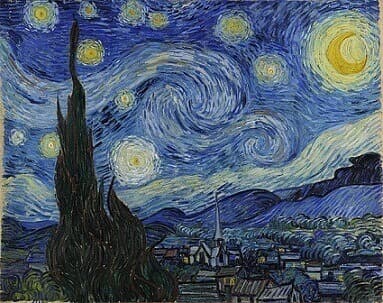
Hailed as Vincent van Goth's magnum opus. The painting was created in a life situation that was tragic for Van Goth. He suffered severely from the mental state which resulted in self-mutilation of his left ear. It was this event that led Van Goth to admit himself to a sanatarium in St Remy. The Starry Night depicts the view outside his sanatarium room window at night. The colors and the wild brushwork have inspired countless artists to create their variations of the theme. Since 1941 The Starry Night has been in the collection of the Museum of Modern Art in New York.
Guernica by Pablo Picasso
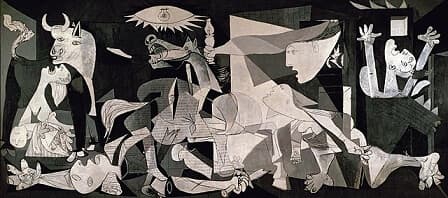
Guernica is a painting by Pablo Picasso, generally considered one of his most famous works and one of the most famous paintings in the world. The inspiration for this painting came after the controversial attack on the town of Guernica because it involved bombing civilians by a military force. The Spanish Republic commissioned Picasso to create the "Anti-War" painting to depict the inhumanity, violence, and despair of war. The painting was sent around the world becoming very acclaimed, but above all, it served to make the world aware of the conflict that was taking place. Since 1992 the work has been kept at the Museo Nacional Centro de Arte Reina Sofía in Madrid.
The Kiss by Gustav Klimt
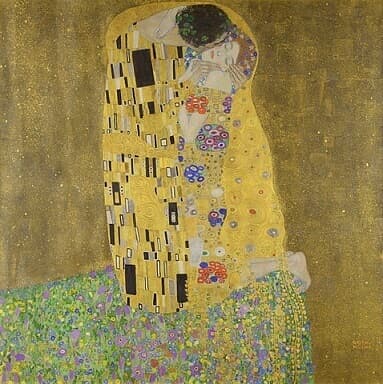
Considered Gustav Klimt's best-known work, The Kiss, has become one of the most famous masterpieces of Art Nouveau. The great popularity of the painting can be in some part attributed to the fascinating use of the gold leaf. Klimt was inspired to use gold leaf when he traveled to Italy in 1903. When he was visiting Ravenna, he saw the Byzantine mosaic in the church of St Vitta. The Kiss was painted sometime in 1907 - 1908 at the height of his "Golden Period." The Kiss is housed in Vienna Belvedere Palace in the Austrian Belvedere Gallery.
Nighthawks by Edward Hopper
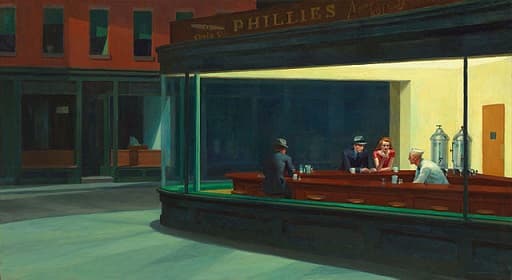
Edward Hopper painted Nighthawks using a diner on Greenwich Avenue in New York for inspiration. Hopper started painting it right after the attack on Pearl Harbour when there was great sadness and concern throughout the country. Not only is this the most famous painting made by Hopper but also one of the most recognizable in American Art. It has been widely distributed through reproductions in many forms. The painting is in the collection of the Art Institute of Chicago.
The Persistence of Memory by Salvidor Dali
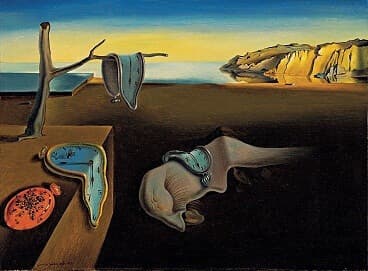
Surrealist work par excellence. The Persistence of Memory by Salvidor Dali is one of the most recognizable works of surrealism. In his autobiographical work "The Secret Life of Salvidor Dali" the painter explains that while afflicted by a sudden headache his gaze was lost in soft camembert that was laying on the table. Applying his paranoiac-critical surrealist method, Dali allowed the softness of the camembert to inspire his imagination and conceived the melting clocks. The painting was anonymously donated to the Museum of Modern Art in New York.
Girl with a Pearl Earring by Johannes Vermeer
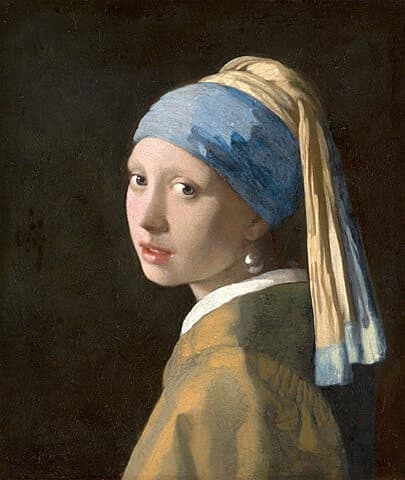
The masterpiece by Johannes Vermeer is estimated to have been created between 1665 and 1667 (although the work is signed it was not dated). It has been the subject of various literary works, including poems, novels, and films. Along with countless reproductions and variations on the theme. After having various names over the centuries, it became known as Girl with a Pearl Earring at the end of the 20th century. Today, the Girl with a Pearl Earring is considered Vermeer's most popular painting. This recognition is however relatively recent since the canvas was forgotten about for more than 200 years until the art collector rediscovered it and bequeathed it in 1903 to the Mauritshuis Museum.
American Gothic by Grant Wood
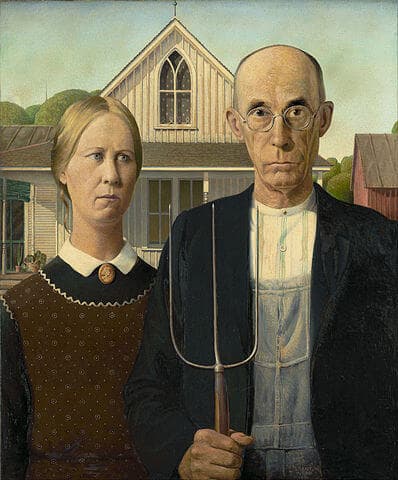
The painting of artist Grant Wood, American Gothic, is one of the best-known images of American Art of the 20th century and has become an icon in popular culture, being one of the most recognized and parodied images of American modern art. Wood drew inspiration from a house in Eldon, Iowa, that was designed in the Carpenter Gothic style, along with "the type of people he imagined would live in that house." The painting is now in the collection of the Art Institute of Chicago.
Dance at Le Moulin de la Galette by Pierre-Auguste Renoir

One of the best-known works of impressionist painter Pierre-Auguste Renoir, Dance at Le Moulin de la Galette, is kept in the Musée d'Orsay art gallery in Paris and is one of the emblematic paintings in the museum. Like other early works from Renoir Dance at Le Moulin de la Galette is a signature portrait of real life. The scene, lit by the light that passes through the leaves, takes place at the Moulin de la Galette in Paris. In the 19th century, the working class of Paris would dress up and spend time there to eat, drink and dance into the night.
A Sunday Afternoon on the Island of La Grande Jatte by Georges Seurat
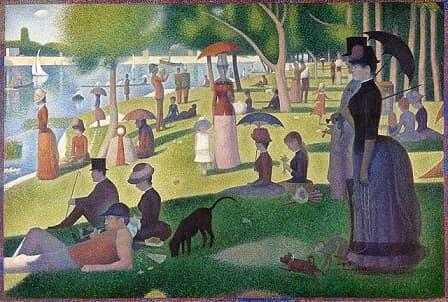
A Sunday Afternoon on the Island of La Grande Jatte by Georges Seurat is a leading example of pointillism and considered by many to be one of the most relevant paintings of the 19th century. The artist applied the pointillism technique to depict people spending a summer's day at the island of La Grande Jatte which is located on the Seine River in Paris. In 1884 when this painting was started, it was a bucolic landscape away from the city center. The painting is exhibited at the Art Institue of Chicago.
The Night Watch by Rembrandt
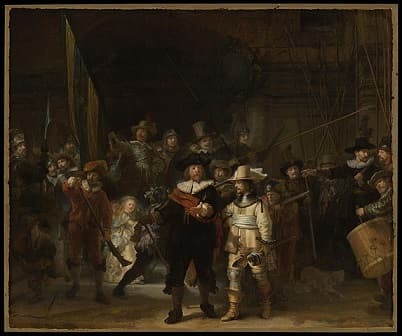
The Night Watch is considered to be one of the greatest masterpieces of Rembrandt and one of the most famous paintings of the "Dutch Golden Age." As such it has been the object of art historical research for generations. The painting depicts one of Amsterdam's civil militia companies commanded by Captain Frans Banninck Cocq and his lieutenant Willem van Ruytenburch. The work was commissioned to decorate the Kloveniersdoelen headquarters. Because of this Rembrandt used monumental dimensions for the canvas to create a life-sized painting. The painting is on exhibition at the Rijksmuseum, which is a Dutch national museum specializing in the art and history of Amsterdam.
Mona Lisa by Leonardo da Vinci
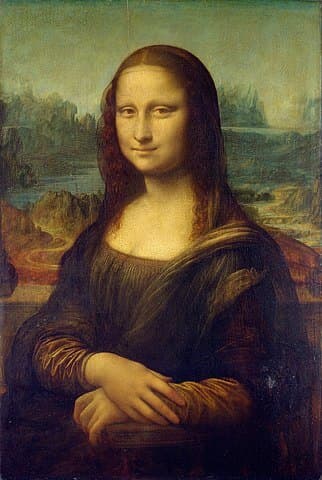
Widely regarded as the world's most famous painting. The Mona Lisa is one of the few paintings attributed with certainty to Leonardo da Vinci. Some researchers assume that Leonardo painted an ideal person rather than a real person, but the majority hold other theories. The Mona Lisa has been exhibited in the Louvre museum in Paris since the end of the 18th century. It was stolen in 1911 and returned in 1913, which fueled its popularity. It is now one of the most famous exhibits in the world.
The Scream by Edvard Munch
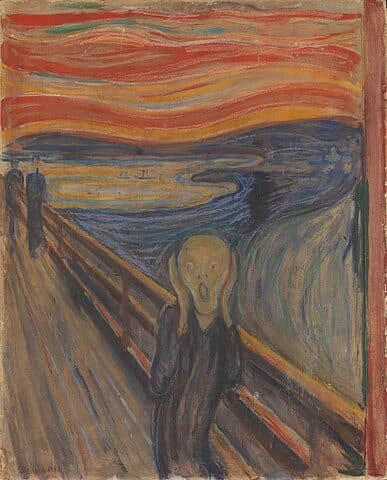
The Scream is the best-known painting by Edvard Munch, part of his "The Frieze of Life" series, and has been reprinted countless times. Munch made four versions of The Scream between 1893 and 1910. The most famous version is the original created in 1893 which was donated to the Norwegian National Gallery in 1910 by art collector Olaf Schou. In 1994 this version of The Scream was the target of a famous theft when it was stolen from the National Gallery. It was recovered several months later.
The Creation of Adam by Michelangelo
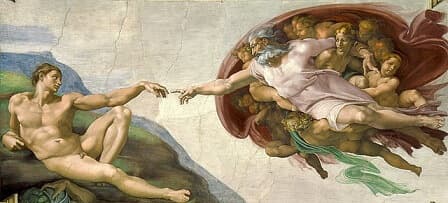
The Creation of Adam was painted using the fresco technique on the ceiling of the Sistine Chapel by Michelangelo around the year 1511. It illustrates one of the nine scenes from the book of genesis, ("1, 27: god created mankind in his own image"), represented by the artist. The painting is one of the most appreciated and recognized works of art in the world, being reproduced countless times and the subject to tributes and parodies.
The School of Athens by Raphael
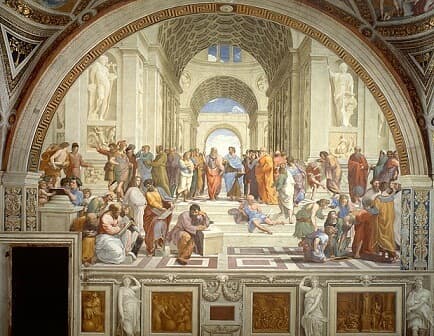
The School of Athens is one of the most famous fresco paintings of the renaissance artist Raphael. The fresco decorates a wall of the "signature room" or "Room of the Signatura" at the Vatican Museums. The painting represents the most famous philosophers and mathematicians of antiquity. It is speculated that every great ancient philosopher is included, but it's impossible to identify them all, as Raphael didn't leave a reference.
The Birth of Venus by Sandro Botticelli

An iconic work by artist Sandro Botticelli, and one of the masterpieces of the Florentine master and the Italian Quattrocento. Believed to have been commissioned by the Medici family. The inspiration for the theme represented by Botticelli can be found in literary sources such as the classic works of Ovid and Angelo Poliziano whose work "Stanze per la Giostra" (1494) described in verse the birth of venus. The painting is exhibited in the Uffizi Gallery in Florence.
The Last Supper by Leonardo da Vinci

The Last Supper is a 15th-century fresco by Leonardo and is one of the most famous representations of "the last supper" from chapter 26 of the Gospel of Mathew. Considered Leonardo's greatest achievement after the Mona Lisa. The painting's composition has been reproduced in popular culture many times. Located on the wall of a dining room hall in the church of Santa Maria Delle Grazie in Milan, Italy, it is the only fresco that Leondao created that has survived. Making it one of the most important works in art history. Which in part is why the abbey has been designated a world heritage site by UNESCO.
Self-Portrait (1889) by Vincent van Gogh
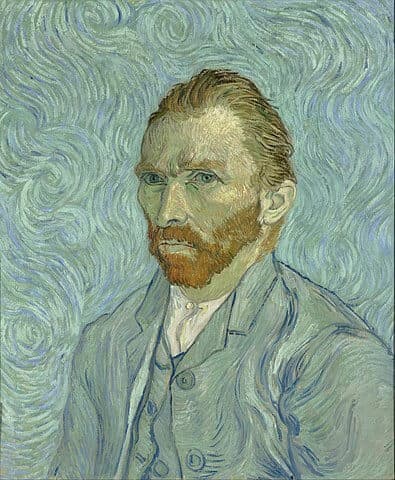
The 1889 self-portrait is an oil on canvas painting by Vincent van Gogh. Like Rembrandt and Goya, Van Gogh often used himself as a model and painted a large number of self-portraits during his artistic career. This may have been his last self-portrait and is considered one of his finest, if not the best. It was painted in September of the same year, shortly before he left the St Remy sanatorium. Van Gogh sent the painting to his brother Theodorus Van Gogh who was an art dealer. The painting was acquired in 1986 by the Musée d'Orsay in Paris.
Napoleon Crossing the Alps by Jacques-Louis David
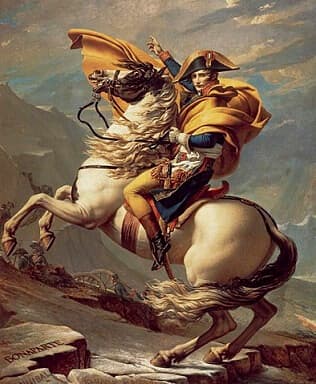
An equestrian portrait of Napoleon Bonaparte was created by Jacques-Louis David between 1800-1803. David painted 5 versions of the portrait which has become one of the most famous Napoleon paintings. Napoleon is represented during the crossing of the Great St Bernard Pass, which marks the beginning of the second coalition war (1799-1802). The archetype of the propaganda portrait has been reproduced many times.
Salvator Mundi by Leonardo da Vinci

Salvator Mundi is a painting attributed to Leonardo da Vinci dated around the year 1500. Despite doubts regarding its authenticity, the painting has become the world's most expensive painting to be sold when in 2017 it achieved a record sum of US $450 million to a private owner. This is the only one of Leanardo's works that remains in private hands. Since the auction, the painting has never been exhibited and its location remains unknown.
Impression, Sunrise by Claude Monet
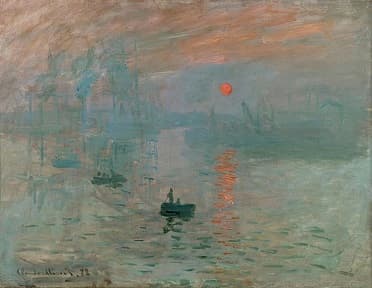
In 1872 Monet returned to his hometown of Le Havre and painted 6 works depicting the old out-port of Le Havre, portraying the scenery of the port at different periods. Impression, Sunrise is the most famous of them and it is the painting that is credited with inspiring the name of the impressionist movement. In 1985 the painting was stolen from the Marmottan Monet Museum in Paris, which further increased its publicity. It was recovered in 1990 and was re-exhibited the following year.